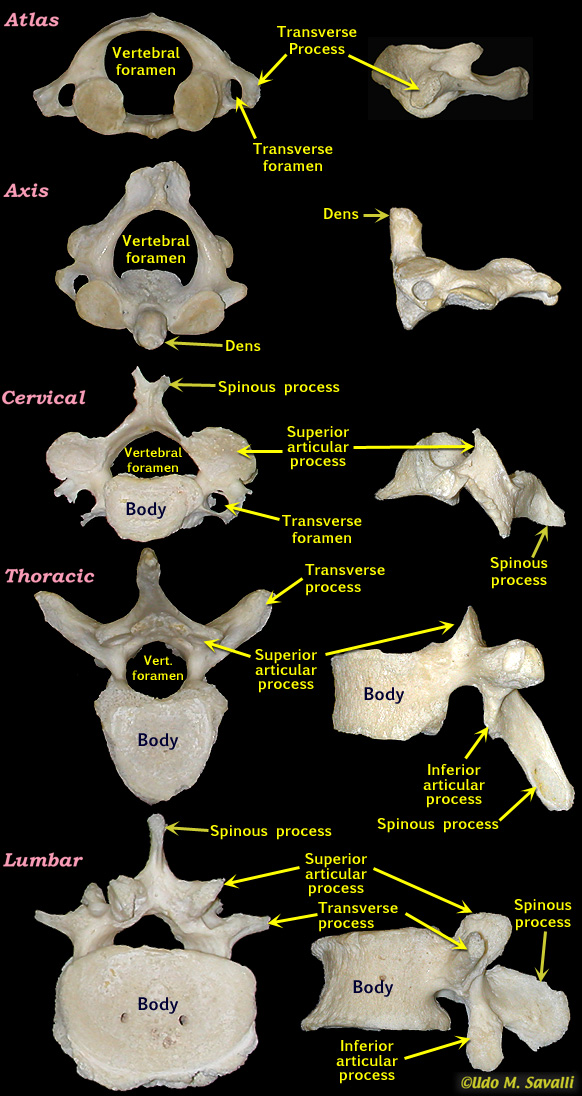|
Return to unlabeled photos
Identification hints: The three features to concentrate on when identifying the vertebrae include the size and shape of the vertebral foramen, the size and shape of the body, and shape of the spinous process. The vertebrae are listed from superior to inferior below.
- The cervical vertebrae can be recognized by a vertebral foramen that is as large or larger than the body (consider that closer to the head, the spinal cord carries more information but the vertebrae have to support less weight). The spinous process of the cervical vertebrae (except the atlas, which lacks a spinous process) has a forked or thickened tip. The cervical vertebrae are the only ones with transverse foramen.
The first two (superior-most) cervical vertebrae are specialized and distinctive:
- The atlas is the only vertebra without a body. Instead, the vertebral foramen extends into the area where the body occurs in other vertebrae (the dens of the axis fits into this area). It is also the only vertebra that lacks a spinous process.
- The axis is also unusual in that it has a large process, the dens that extends superiorly from the body (and fits into the anterior portion of the vertebral foramen of the atlas).
- The thoracic vertebrae (as well as the lumbar vertebrae) have a body that is larger than the vertebral foramen (supporting more weight but carrying thinner spinal cord). The vertebral foramen is usually round and the body is distinctively heart-shaped (hint: heart-shaped vertebrae are closest to the heart). The spinous process is elongated, pointed, and projects downward, well below the plane of the body.
- The lumbar vertebrae have the largest bodies, oval in shape, while the vertebral foramen is small and somewhat triangular. The spinous process is laterally flattened, with a broad, rounded end that projects posteriorly more than inferiorly.

|
